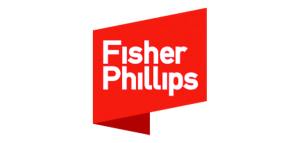PPP: Tax Forms
Refundable Paid Sick Leave/FMLA and Employee Retention tax credits, use the Quarterly income Tax Form 941
To request an advance on the tax credits ahead of the quarterly filing, use this IRS Form 7200
Author: Joe Jackson
Refundable Paid Sick Leave/FMLA and Employee Retention tax credits, use the Quarterly income Tax Form 941
To request an advance on the tax credits ahead of the quarterly filing, use this IRS Form 7200
Please note with urgency the SBA Form 3509 is for companies that have a PPP loan over $2 million that amounts to a “needs” test. We have spoken with Senate Small Business Committee staff and they are aware of concerns over this development

Akshat Thirani from Amper Technologies
Akshat Thirani, CEO & Co-founder of Amper, an OEE and machine monitoring system designed specifically for precision manufacturers, will cover a variety of key performance indicators that every manufacturer should be measuring. He will also discuss simple solutions to help turn raw data into action, the key difference between leading indicators vs. lagging indicators, as well as how Amper can digitize your factory and replace paper production reports.

With public hesitancy regarding the COVID-19 vaccine still running high, employers are considering whether and how to encourage – or even incentivize – employees to get vaccinated. A significant issue that can be overlooked when approaching this topic is the fact that some vaccine recipients will probably experience mild-to-moderate side effects after being inoculated, particularly after the second dose. What can employers do to address this natural occurrence and ensure the majority of your workforce gets vaccinated?

Stopping short of completely eliminating quarantine requirements for people who have been fully vaccinated for COVID-19, the Centers
for Disease Control and Prevention (CDC) just substantially relaxed its recommended isolation requirements for those who have
completed the vaccine regimen. While certain restrictions still remain and the guidance is almost certain to change in the coming
months, this new guidance provides employers yet additional motivation to encourage their workers to get inoculated. What do
employers need to know about the February 10 announcement?

Since the COVID-19 pandemic began, the Centers for Disease Control and Prevention (CDC) has recommended the use of a face
mask to help stop the spread of the virus. State and local governments followed suit, in some cases issuing directives
requiring masks be worn in public areas, including the workplace. Yesterday, the CDC released a new report and guidance urging
Americans to “double-mask” — wearing a cloth mask over a surgical mask — to slow the spread of COVID-19 and the more
contagious variants of the virus. While the CDC’s latest guidance merely encourages double-masking, employers may want to track
this recent development so that you are prepared to quickly pivot if compliance changes take place. Here’s what employers need to
know about the February 10 release.

Stopping short of completely eliminating quarantine requirements for people who have been fully vaccinated for COVID-19, the Centers
for Disease Control and Prevention (CDC) just substantially relaxed its recommended isolation requirements for those who have
completed the vaccine regimen. While certain restrictions still remain and the guidance is almost certain to change in the coming
months, this new guidance provides employers yet additional motivation to encourage their workers to get inoculated. What do
employers need to know about the February 10 announcement?

Citing the uncertainty surrounding the state of the law when it comes to offering incentives to employees who receive the COVID-19
vaccination, a collection of over 40 business groups and associations just submitted a letter to the Equal Employment Opportunity
Commission seeking guidance on what’s allowed and what might violate federal law. The February 1 letter is the product of significant concern regarding the legality of a vaccination incentive program as summarized in a recent FP Legal Alert and highlighted in a just released FP Flash Survey which revealed 43% of employers are unsure about how to proceed. What do employers need to know about this development?

Ed Chivers & Scott Starr from Reacton Fire Suppression Systems
Ed Chivers and Scott Starr of Reacton Fire Suppression Systems will show the need for automatic fire suppression systems with an in-depth overview for CNC machines. Reacton Fire Suppression systems use the proven fire detection tube technology while coupling it with a larger range of high-performance systems optimized for clean agent gaseous fire suppressants from 3M and Chemours.
